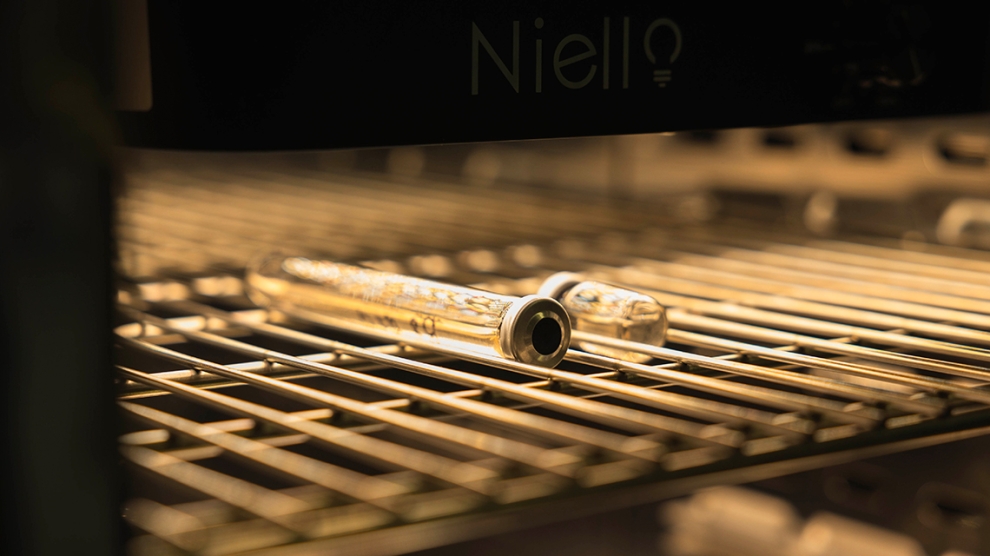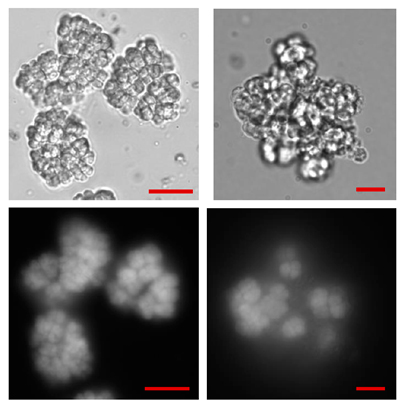Learn about the role and contribution of Uppsala University in the Photo2Fuel project, from the design of organic photosensitizers and the integration of microorganisms in hybrid systems, to overcoming the challenges of optimizing light-harvesting materials for efficient CO₂ reduction.

For today’s article, we are joined by two distinguished experts from Uppsala University. Professor Haining Tian leads a research group in the Department of Chemistry at Uppsala University focusing on innovative strategies for solar energy conversion and storage. The team's work emphasizes the development of novel organic materials and their integration into devices that harness sunlight to produce electricity, fuels, and chemicals. Mariia Pavliuk is a researcher working in Tian’s research group, specializing in physical chemistry and solar energy conversion. Her work focuses on the preparation and study of advanced materials for photocatalysis, particularly organic polymer nanoparticles, to improve light-driven processes like hydrogen production and CO₂ fixation. Given their expertise, Uppsala University's role in the Photo2Fuel project becomes particularly significant.
What role does Uppsala University play in the Photo2Fuel project, and how does your team contribute to its success?
At Uppsala University, our focus lies on designing and preparing suitable organic photosensitizers. An organic photosensitizer is a metal-free material that absorbs light, typically in the visible or near-infrared range, and transfers the energy or electrons to other molecules or catalysts to drive a chemical reaction. Unlike inorganic alternatives, they avoid the use of metals, making them well-suited for interactions with microorganisms. In the Photo2Fuel project, we are working to design organic photosensitizers that can:
- Efficiently harvest light in the visible spectrum.
- Deliver photogenerated charges to bacteria.
- Maintain close contact with bacteria, such as Moorella thermoacetica or Methanosarcina barkeri, within a biohybrid assembly for CO₂ reduction.

Our team ensures that the organic photosensitizers we design align with the specific requirements of the microorganisms converting CO₂ into value-added chemicals. In the Photo2Fuel project, we focus on organic photosensitizers that are dispersible in water to facilitate CO₂ reduction in the presence of microorganisms. Here are the key materials we use:
- Polymers: Long chains of organic molecules with tailored optical and electronic properties, forming the backbone of our light-harvesting systems.
- Polymer dots (Pdots): Nanoscale particles made from polymers or organic molecules combined with amphiphilic polymeric surfactants. Pdots have unique optical, electrical, and mechanical properties and range in size from a few to about 100 nanometers.
- Carbon dots (Cdots): Nanoscale fluorescent materials primarily made of carbon atoms, with potential heteroatoms like nitrogen, sulfur, or oxygen. Cdots are smaller (1–10 nanometers) and differ from Pdots in composition, synthesis, and optical properties.
While all these materials are biocompatible, Pdots excel in their optical performance in the visible range, while Cdots are valued for their small size and versatile functionality.
What is a biohybrid system, and how is it used in this project?
A biohybrid system combines the catalytic power of nature’s enzymes or microorganisms with efficient, man-made light-harvesting materials to produce solar fuels. The goal is to overcome the limitations of natural and artificial photosynthesis for creating value-added chemicals. In the Photo2Fuel project, we are designing biohybrid systems where organic photosensitizers efficiently deliver electrons to microorganisms capable of converting CO₂ into products like methane or acetic acid.
What factors can influence how polymers assemble on microorganism surfaces, and how does this impact system efficiency?
Several factors influence the interaction between light-harvesting materials and microorganisms, including size, geometry, and surface charge. The proximity of these interactions is critical, as closer contact between the light-harvesting center and the microorganisms enables more efficient electron transfer. This, in turn, enhances the overall performance of the biohybrid system.
What significant improvements have you made in the design of photosensitizers, and how do these improvements affect system efficiency?
In the Photo2Fuel project, we have developed biocompatible and stable organic nanoparticles that not only extend light absorption in the visible spectrum but also incorporate surface groups specifically designed to facilitate close interactions with targeted microorganisms. These advancements significantly enhance the efficiency of light harvesting and electron transfer, ultimately improving the overall performance of the system.
What challenges have you faced during the project?
One of the primary challenges in the Photo2Fuel project has been balancing the requirements of organic photosensitizers and microorganisms. Microorganisms necessitate nutrient-rich media to function effectively, while organic photosensitizers are prone to destabilization in high-salt environments. Achieving harmony between these components has required meticulous optimization to ensure both systems can work synergistically.
What have you learned from the Photo2Fuel project?
The project has shown us that surpassing the efficiency of natural systems is challenging, but it is indeed possible with the right combination of innovation and collaboration.